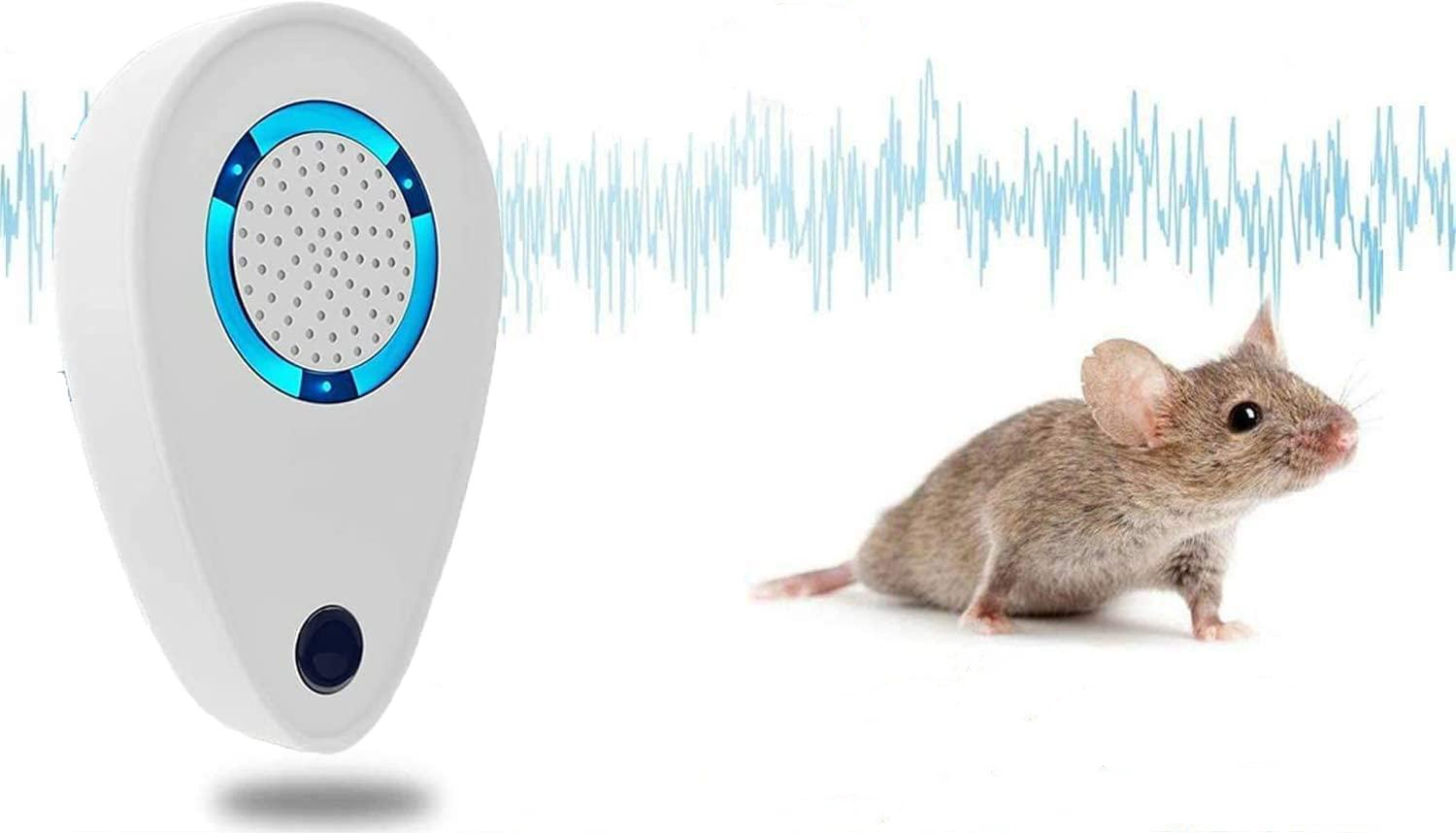Do you have unwanted guests in your home, scurrying around at night and leaving little "gifts" everywhere? No, I'm not talking about your in-laws, I'm talking about mice! These small animals can be a real nuisance because they can chew through wires, ruin food, and just make your living space look dirty.
So what should we do?
To get rid of them, you could set out traps or hire an exterminator, but what if I told you there was a more high-tech solution? That's right, my friend, we're talking about
ultrasonic pest repellers! These little devices claim to emit high-frequency sound waves that
drive pests like mice away.
But do ultrasonic pest repellers work on mice? Or are they just a gimmick that's all sound and no substance? This article will dive into the world of ultrasonic pest repellers and find out if they really work on mice. Let's start with how it works.

How Do Ultrasonic Pest Repellers Work?
Have you ever wondered how such a powerful device works? The
ultrasonic pest repeller is a small electronic device that emits high-frequency sound waves to repel pests like mice, rats, and insects.
The principle behind these devices is that the sound waves emitted by ultrasonic pest repellers are typically 20,000 to 60,000 Hz. It's too high for humans and pets to hear, but they are unbearable for pests, causing them to flee the area.
Sounds good, doesn't it? But you also need to pay attention to is...
It's important to note that ultrasonic pest repellers are not designed to kill pests. Instead, they are meant to be a more humane way to deter pests from entering your home or living space. However, whether or not ultrasonic pest repellers work may depend on various factors. This includes the specific device, the type of pest you are trying to repel, and the environment in which you use the device.
While the theory behind ultrasonic pest repellers seems perfect, there's some debate about whether these devices work on mice. So next, let's find out whether the ultrasonic pest repellers can repel mice.
Can Ultrasonic Pest Repellers Really Repel Mice?
We can both agree that ultrasonic pest repellers are the popular way to repel mice from entering indoor spaces. But homeowners, pest control professionals, and researchers have different opinions about their effectiveness on mice. However, researchers and users have confirmed that
ultrasonic pest repellers can repel mice.
How?
For example, a
recent study found that ultrasonic pest repellers can reduce mice activity in a laboratory setting. Additionally, many homeowners on
Quora have reported success using ultrasonic pest repellers to keep mice out of their homes.
But to be effective, you should use ultrasonic pest repellers with other pest control methods, such as traps and sanitation. And mice can become accustomed to the sound over time, so moving the devices around is important.
While ultrasonic pest repellers may not work for every type of insect, they are an effective option to repel mice. But since it is an electronic device, you should also think about how safe it is. Are ultrasonic pest repellers harmful? Read on to find out.
Are Ultrasonic Pest Repellers Harmful to Humans and Pets?
The answer? Of course not.
The sound waves emitted by ultrasonic pest repellers are safe and inaudible to humans and most pets, including cats and dogs. To make sure safety, it is important to choose a well-known brand and follow the instructions from the manufacturer.
Additionally, some people said that their pets become anxious when exposed to the high-pitched sound waves emitted by these devices. This is not a common occurrence, and it may just be that the pet is too sensitive. But you should also monitor your pet's behavior and discontinue use if they seem to behave very strangely.
Overall, when used properly,
ultrasonic pest repellers are considered safe and effective pest control methods. But if the effect of using the ultrasonic pest repeller is not obvious, then other methods are needed to assist in repelling mice.
Other Methods of Ultrasonic Pest Repellers for Mouse Control
Here is a question: besides ultrasonic pest repeller, is there any other way to get rid of mice? While ultrasonic pest repellers can be useful in a comprehensive pest control strategy, they may not be effective in all situations. Fortunately, there are various methods that can be used to help with mouse control:
1. Traps: Traditional snap traps, live traps, and glue traps can all catch mice effectively. However, it's important to check traps regularly to ensure that caught mice are released or disposed of promptly.
2. Exclusion methods: Sealing off entry points and eliminating potential food sources can be an effective way to prevent mice in the first place. It includes sealing cracks and gaps in walls and floors, keeping areas clean, and storing food in airtight containers.
3. Natural deterrents: Some natural deterrents, such as peppermint oil, cayenne pepper, or garlic, can repel mice. While the effectiveness of these methods may vary, they can be worth trying as a non-toxic option.
4. Professional extermination: In some cases, professional extermination may be the most reliable option for mouse control. But it can be expensive, and it's not a one-and-done solution.
Ultimately, the best approach to mouse control will depend on the individual situation. By using ultrasonic repellers in combination with other methods, you can never be infested with mice again.
Conclusion
To sum up, ultrasonic pest repellers have proven effective in repelling mice. And it is completely harmless to humans and pets. While some factors, such as the device's brand and type of pest, may impact their effectiveness, they are a safe and effective mouse control solution. It's important to use ultrasonic pest repellers correctly, and they should be used with other methods for the best mouse control effect.
